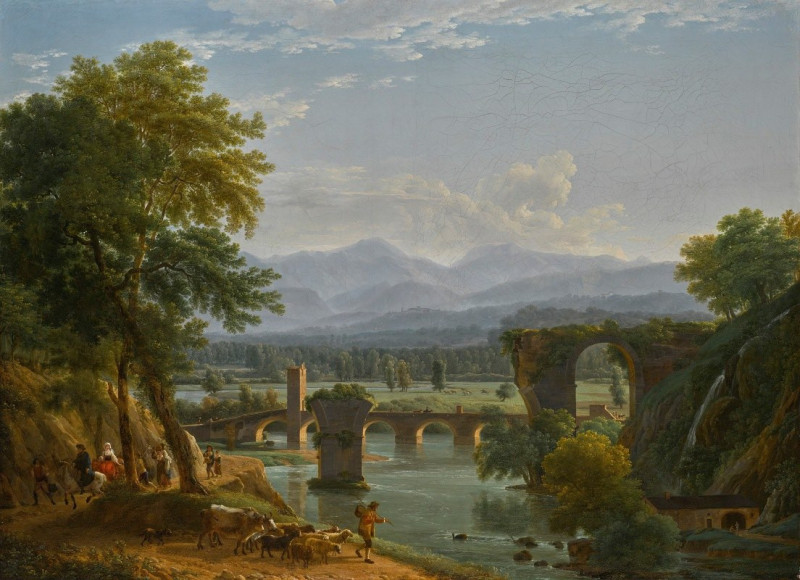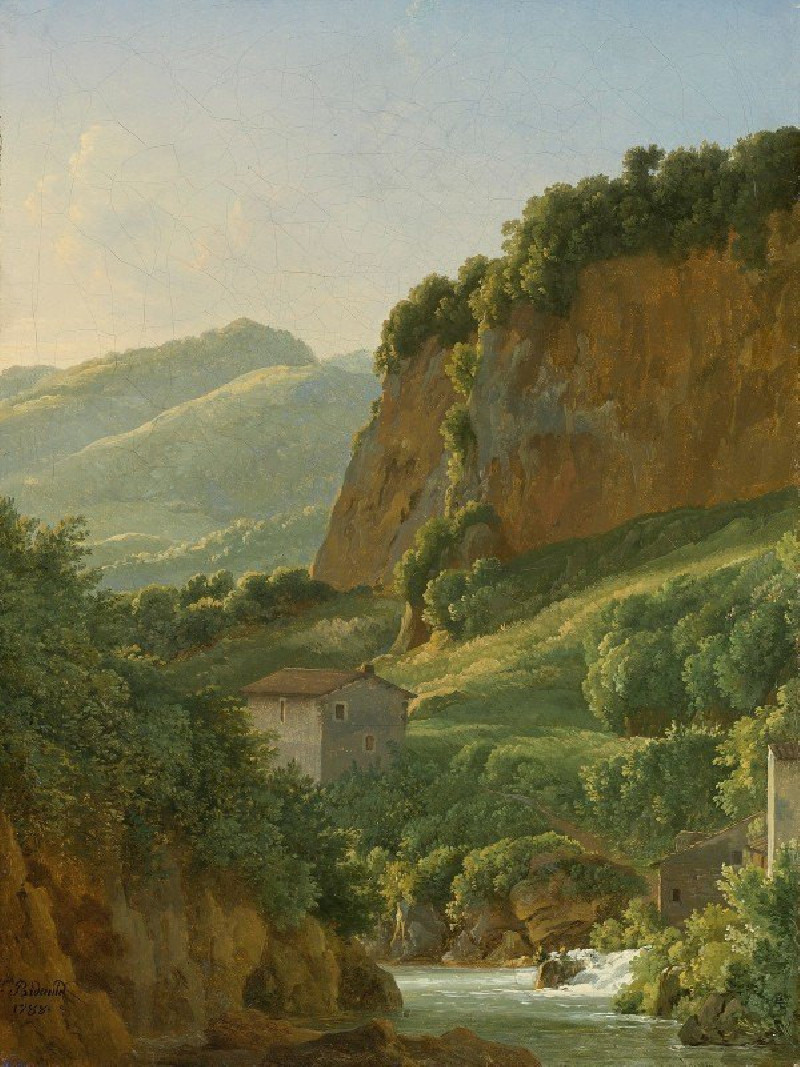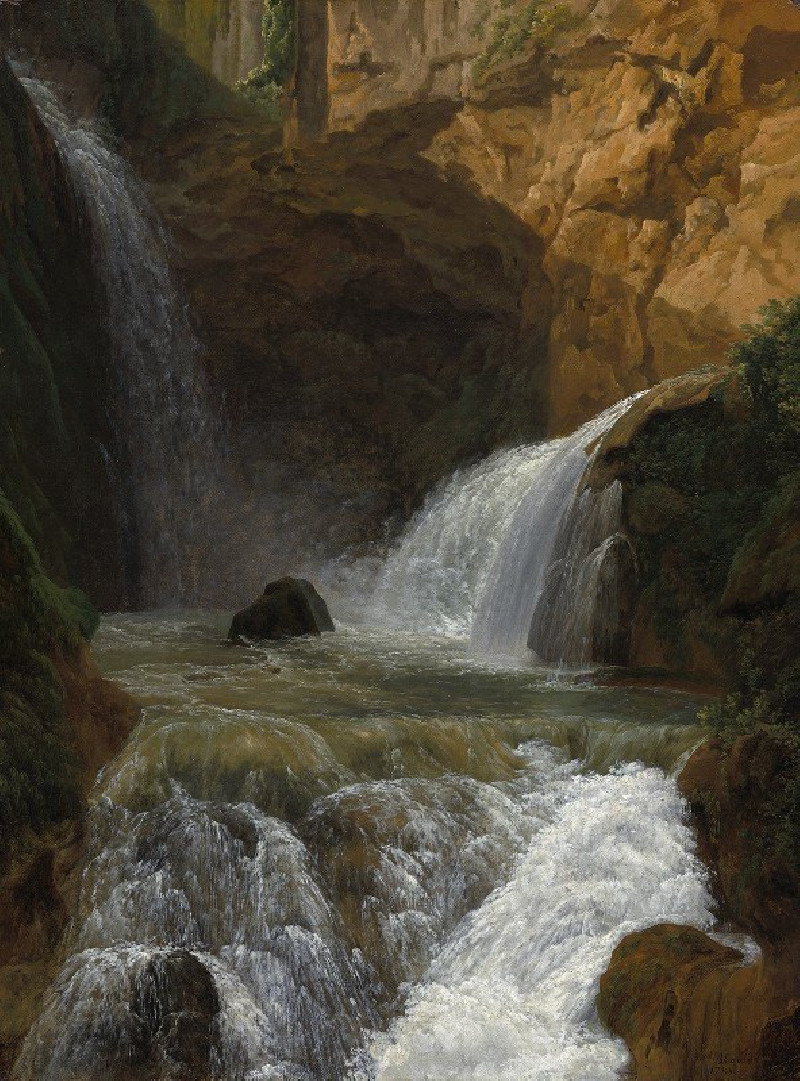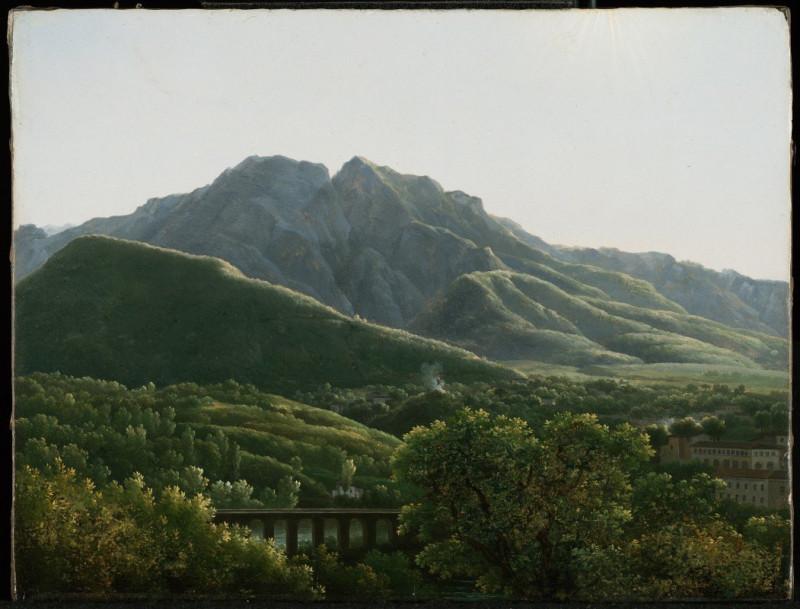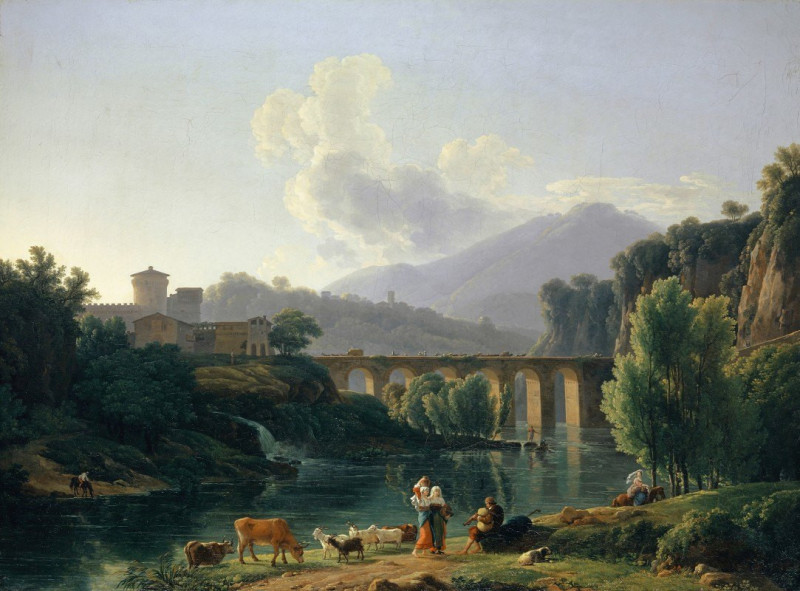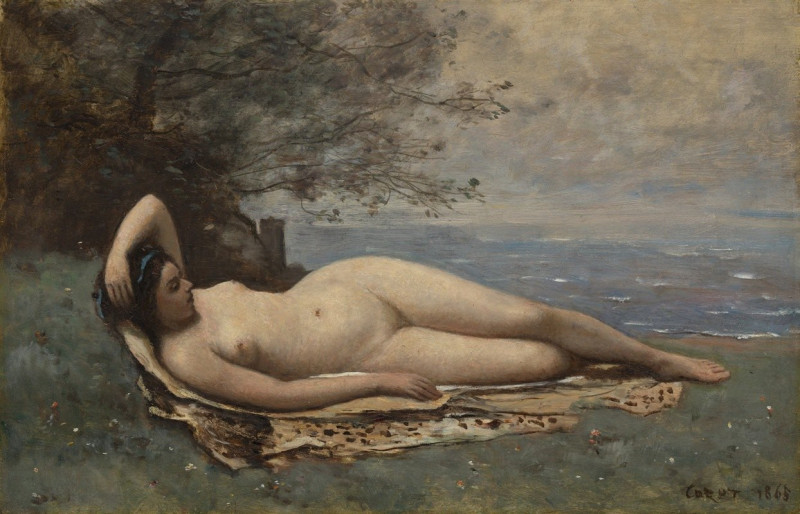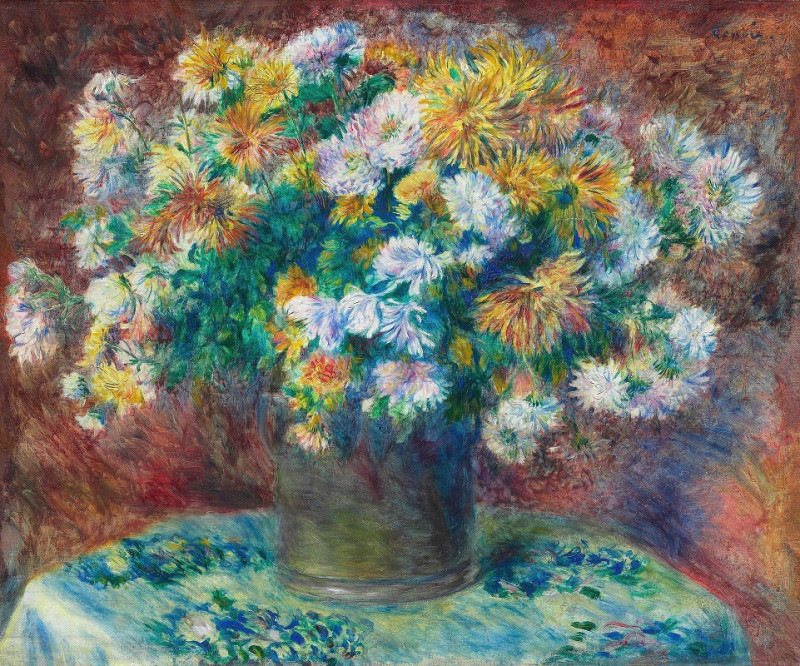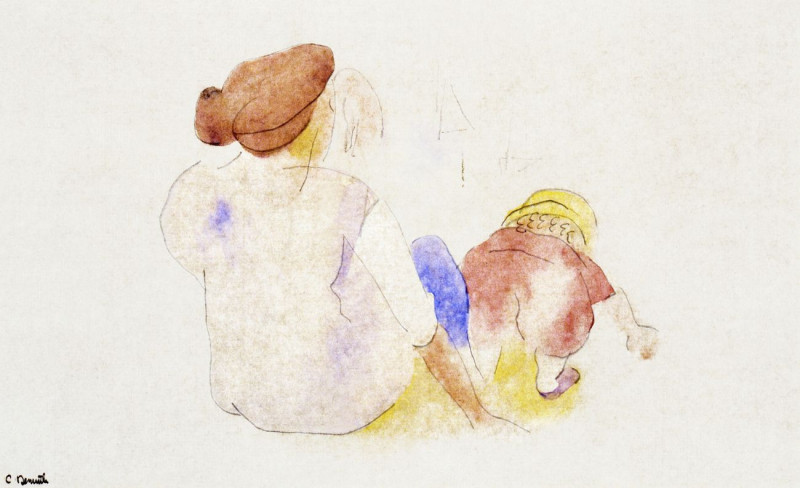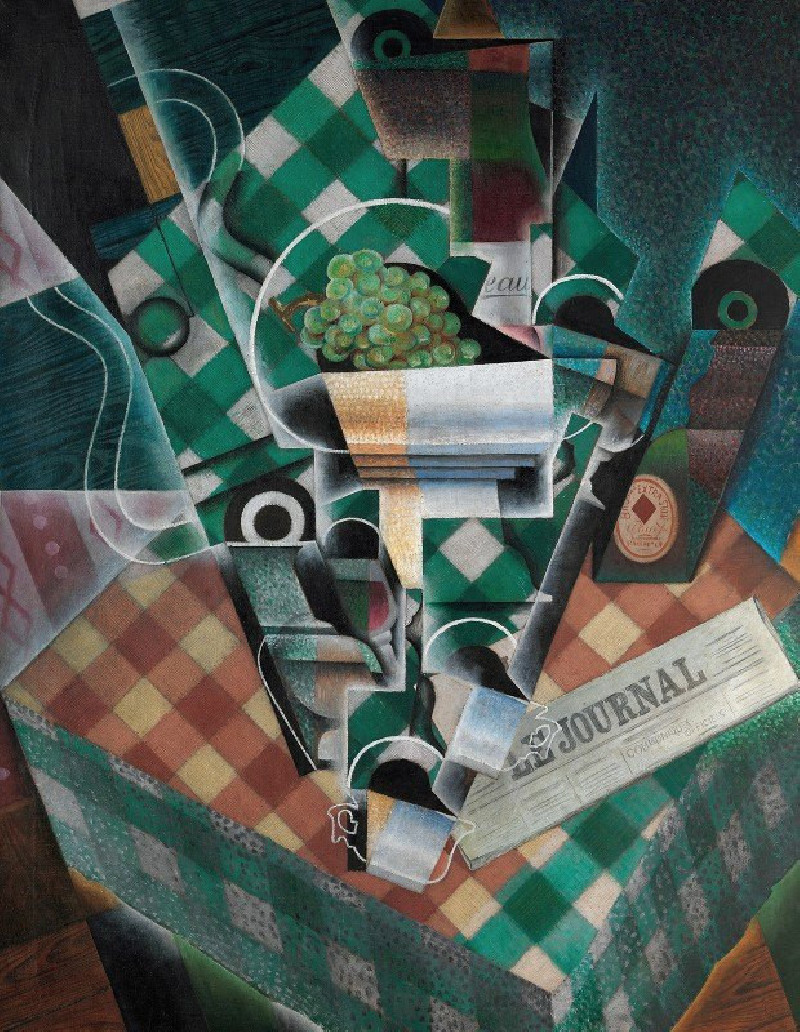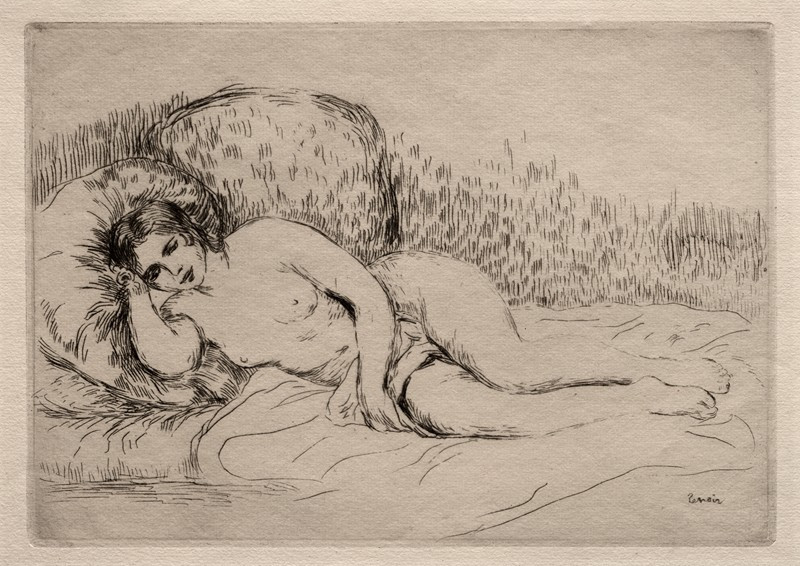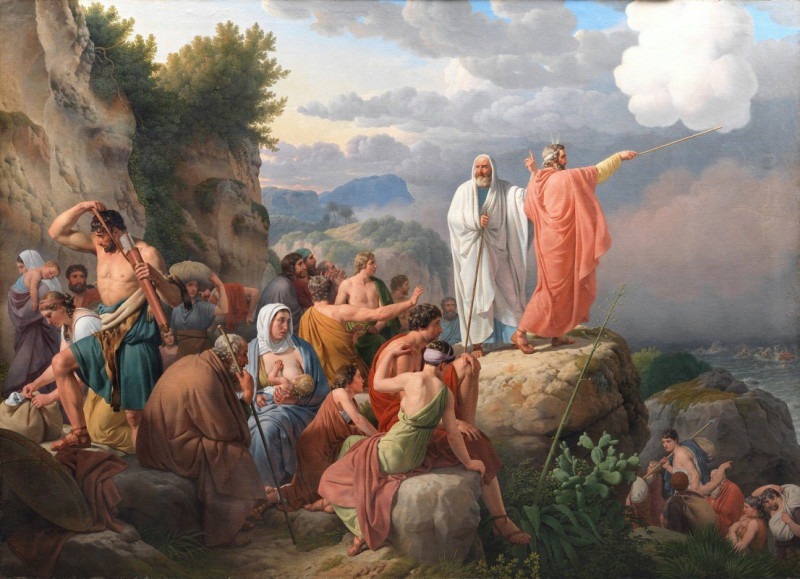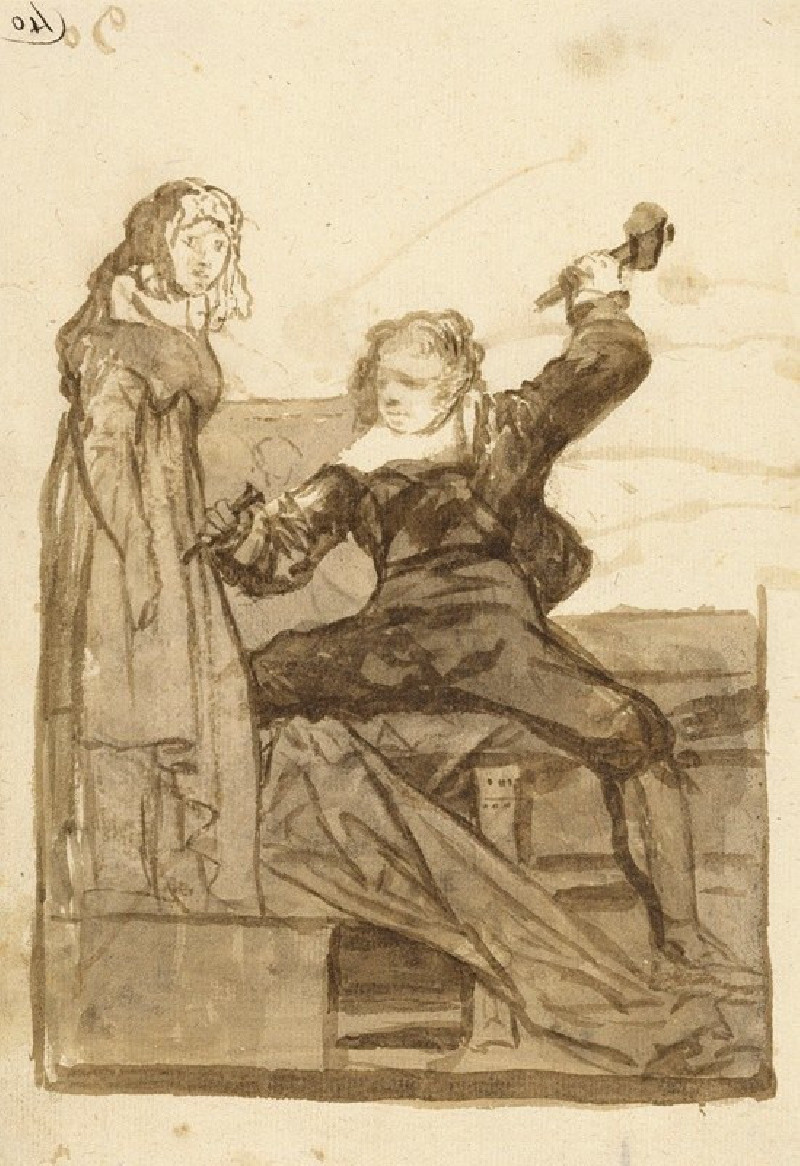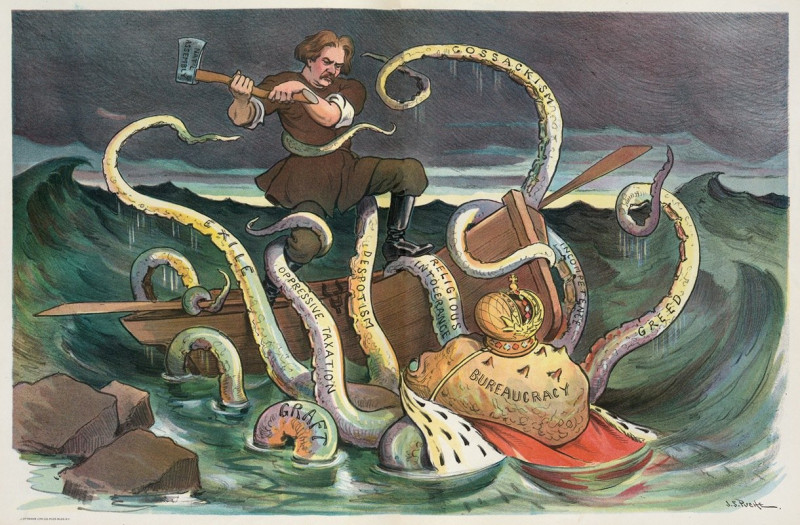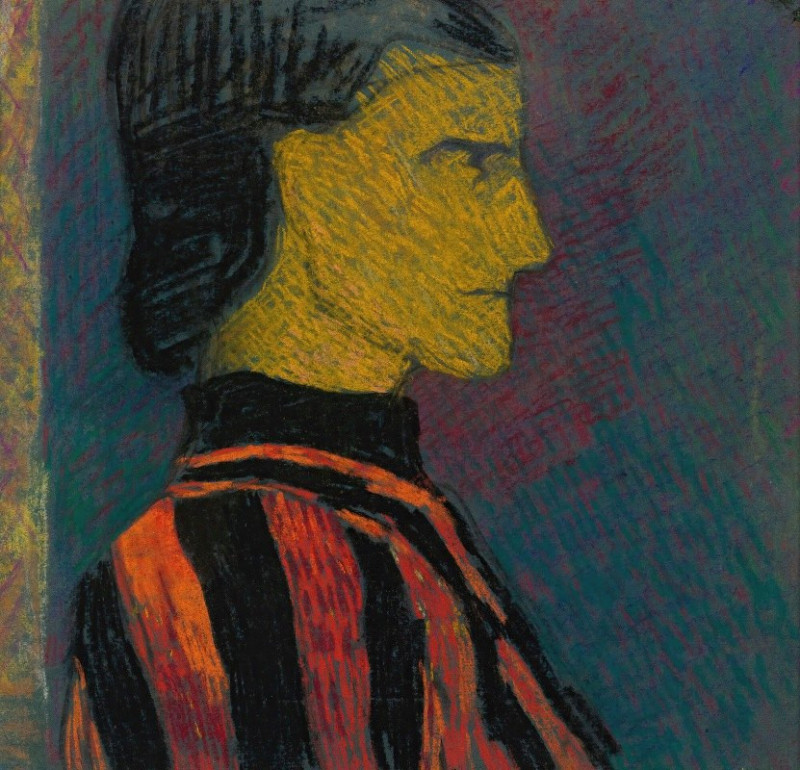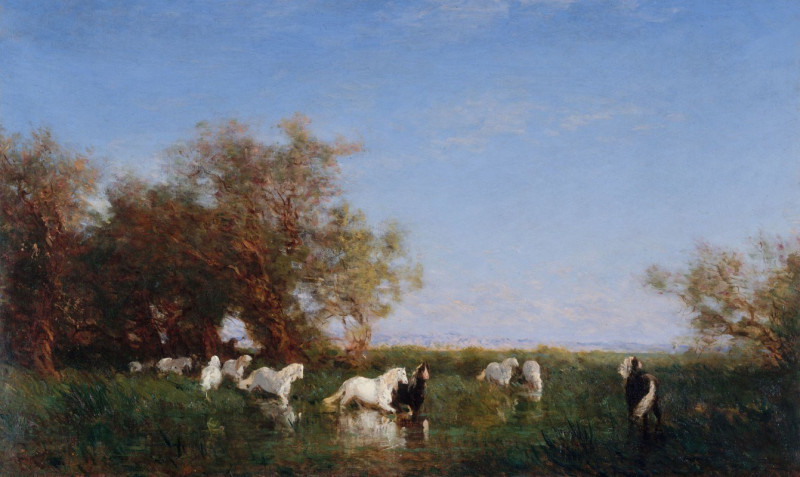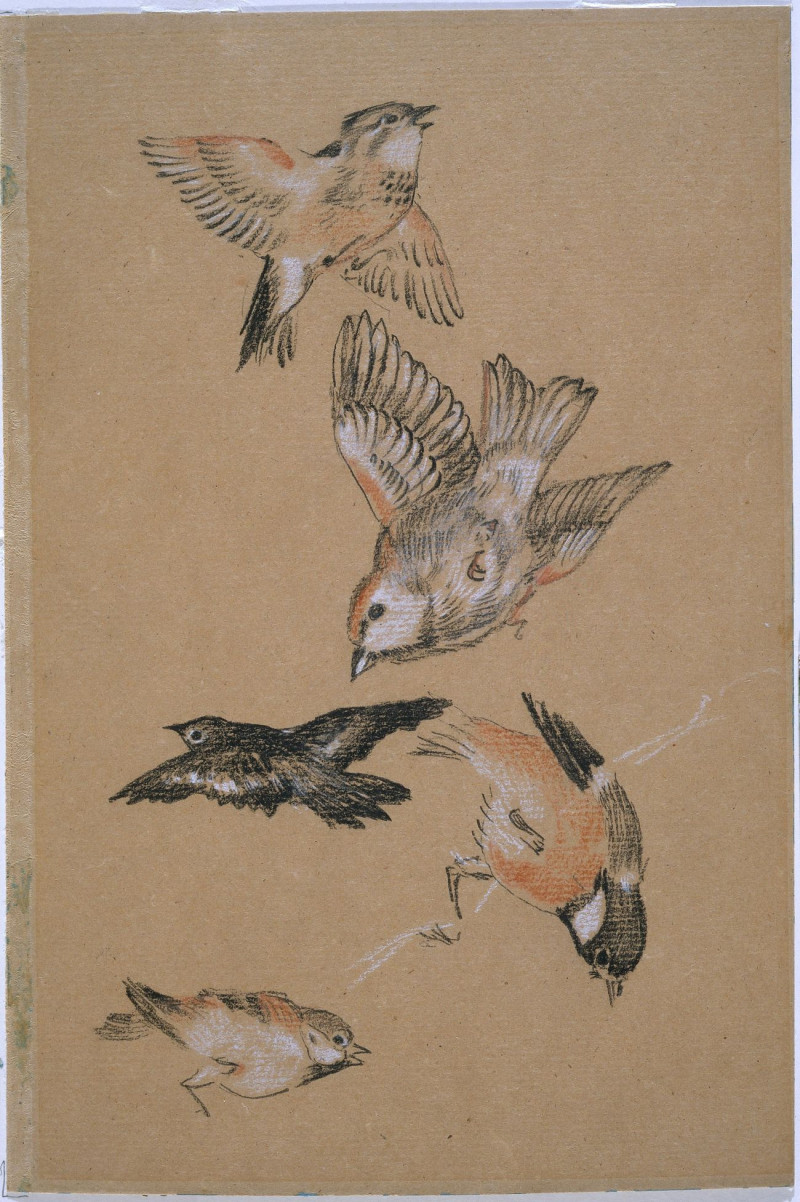The Augustus Bridge Over The River Nera, Near The City Of Narni, Italy (1790)
Technique: Giclée quality print
Recommended by our customers
More about this artwork
The painting "The Augustus Bridge Over The River Nera, Near The City Of Narni, Italy" created by Jean-Joseph-Xavier Bidauld in 1790, is a captivating representation of picturesque tranquility and historical significance. Set amidst the serene Italian landscape, this scenic masterpiece draws viewers into a harmonious interplay between nature and architecture.In the foreground, Bidauld illustrates a bustling rural scene with figures engaged in daily activities. A shepherd guides his flock along the river’s edge, while travelers on foot and horseback proceed along a path that cuts through lush, verdant banks. These human elements inject life and scale into the landscape, suggesting the coexistence of mankind with nature.The central feature of this painting is the majestic Augustus Bridge, arcing gracefully over the shimmering River Nera. The bridge, a marvel of Roman engineering, is rendered with exquisite architectural accuracy, its robust arches symbolizing durability and timelessness. It connects the vibrant foreground to the tranquil scenes in the distance, where the river continues its journey beneath the bridge’s sturdy span.Beyond the bridge, the pastoral landscape opens up into an expansive view of the valley, with distant mountains cloaked in delicate hues of blue and gray, creating a soft, atmospheric perspective. The skies above are painted with light, fluffy clouds, suggesting an early morning where the soft light enhances the peaceful and idyllic mood of the setting.Jean-Joseph-Xavier Bidauld’s use of fine detail, from the textured foliage and reflective water to the nuanced expressions and postures of the figures, showcases his skill in capturing both the grandeur of the Italian landscape and the intimate moments within it.
Delivery
Returns
Jean-Joseph-Xavier Bidauld was a French painter.
A native of the city of Carpentras, Bidauld first studied painting with his elder brother, Jean-Pierre-Xavier, in Lyons. In 1783 he traveled to Paris, while there, he won the favor of an art dealer and perfume seller named Dulac. This latter subsidized Bidauld's travels in Italy, where for five years he lived in Rome and traveled widely. Most of his contacts within the French artistic community in that city were history painters.

